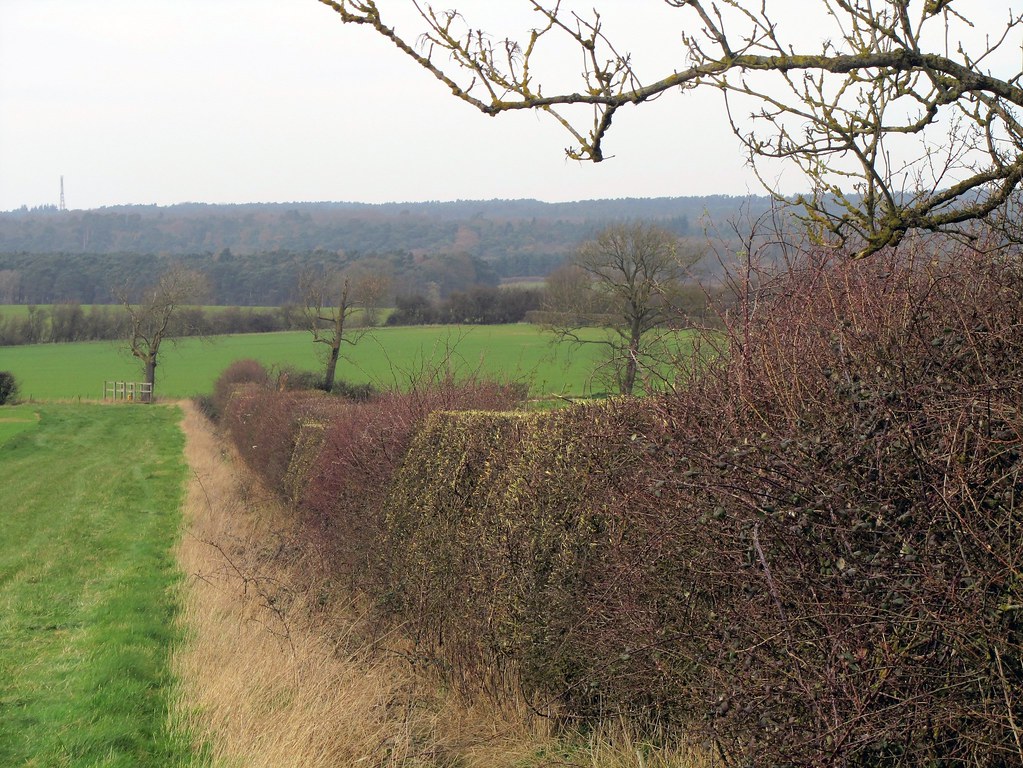Futures Forum: Devonshire hedgerows in spring
And there are several projects to ensure they are looked after:
Futures Forum: Devonshire hedgerows and verges - and national guidance on cutting
Futures Forum: Devon Hedge Group >>> free event at the Donkey Santuary >>> 'Firewood from Hedges and Hedge-Laying' >>> Thursday 17th December
This week's briefing from the Arthur Rank Centre looks at the latest research into how we can take care of our hedges:
Increasing the value of hedges for wildlife with relaxed cutting regimes
Most hedgerow species only flower and fruit on wood that is at least two years old. This research found strong benefits for wildlife of reducing the frequency of hedgerow trimming to once every three years, compared with the standard practice of trimming every year. Cutting once every two years had weaker benefits. Relaxing the intensity of trimming to allow incremental growth also delivered substantial benefits. For hedges being used to meet CAP ‘greening’ rules, these relaxed management regimes may provide greater benefits to wildlife.
Centre for Ecology and Hydrology
2354_Hedgerow_management_for_wildlife.pdf
INCREASING THE VALUE OF HEDGES FOR WILDLIFE WITH RELAXED CUTTING REGIMES
RESOURCE EXPLAINED:
Hedges (semi-natural habitats) provide resources for wildlife and support pest control and crop pollination on your farm. How you cut them can substantially alter their condition and value as wildlife habitats. This leaflet presents findings of ongoing research undertaken by the Centre for Ecology & Hydrology that has tested the effects of hedgerow cutting regimes on five farms over three years. It outlines why hedgerow management is important. It describes the effects on wildlife and fruit and flower abundance of cutting hedgerows once every three and two years compared to every year. Findings in relation to reduced cutting intensity of hedgerows (which covers the effects of hedge growth, production of berries and diversity of butterfly and moth species) are outlined. The management summary presents the benefits that have been found in relation to hedgerow trimming and cutting and wildlife, which support cutting regimes available under agri-environment schemes in England.
FINDINGS & RECOMMENDATIONS:
- Farmland birds and mammals rely on berries as a food source over winter. Hedgerow species only flower and fruit on wood that is at least two years old.
- Reducing the frequency of hedgerow cutting can lead to increased production of flowers and therefore more pollinating insects and berries for overwintering wildlife.
- Cutting once every three years has been found to have more benefits than once every two years.
- Reducing the intensity of hedge trimming by cutting about 10cm higher and wider than the previous cut has been found to result in 2-3 times more berries for overwintering wildlife on three hedge species (hawthorn, blackthorn and bramble) and an increased diversity of butterfly and moth species.
- For hedges being used to meet Common Agricultural Policy ‘greening’ rules, relaxed management regimes may provide greater benefits to wildlife.
Increasing the value of hedges for wildlife with relaxed cutting regimes | Agricology
And from the Devon Hedge Group there is some handy advice on how to manage these wildlife-rich habitats:
Trimming (cutting)
Trimming can keep hedges thick and bushy, so they are stock proof and fine wildlife habitats, if carried out in the right way. It will also prolong the management cycle, so the expense of laying or coppicing hedges is kept down. By far the most practical way to trim hedges is using a flail cutter, although on occasion, where larger growth is involved, a shaping saw may be appropriate (although very few farmers or contractors have them).
Trimming must be carried out in the right way to keep a hedge in good structural condition, and to produce good crops of flowers and berries. Ideally hedges should not be cut annually but no more often than once every three years. In Devon soil conditions are such that very few farms are able to cut their hedges after October. Because of this, cutting hedges every other year brings few benefits since there will still be no berries available for birds in the winter. If hedges are cut annually then the cutting height should be raised a few inches for each cut as this will help the structure of the hedges and allow at least some plants to flower and fruit.
Devon Hedge management 3: trimming explains all this in detail. The Centre for Ecology and Hydrology leaflet Increasing the value of hedges for wildlife with relaxed cutting regimes presents the results of new (2015) research. Further information can be found in the Hedgelink publication Hedgerow cutting: answers to 18 common questions.
See also The economics of sustainable hedge cutting (although this report was commissioned by the Devon Hedge Group in 1995, its conclusions remain valid).
Hedges should not be cut in the bird breeding season (March to August inclusive) or, for farmers who claim under the Basic Payment Scheme, breach the rules of that scheme. For information on this see The law and other protection .
Trimming (cutting) - Devon Hedge Group
.
.
.


No comments:
Post a Comment